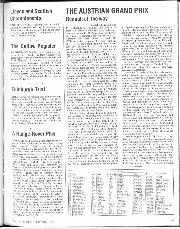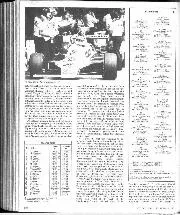

A Range-Rover Plus
Schuler Presses have been offering various options for Range-Rovers for some time, varying from superior interior trim to uprated suspensions, from quad-lamps to alloy wheels. Now they offer what must be the…
A NEW PROCESS FOR CAR PAINTING. How Scientific Methods Speed Up a Process which could not be Hurried
HAVING spent some considerable time in overhauling his car in readiness for the season’s competition work, the average sporting motorist finds that the early months of the year have passed all too quickly, and he has either to cancel some of his entries for the April events, while his car is being repainted, or else go through the whole season with a disregard for the appearance of his machine.
But paintwork should not only be regarded as something to improve the appearance of the car, or to please the eye of one’s friends it has an important duty to fulfil in preserving the structural condition of the bodywork, and, therefore, deserves more attention than it usually receives.
In the ordinary way the process of painting a car properly occupies a matter of weeks, but recent developments in this direction have brought about a remarkable reduction in the time required to paint any car, without eliminating the careful hand-work so necessary to produce a high-class finish.
This process has been put on a commercial basis by the Rapid Coach Painting & Engineering Co., of 588, Lea Bridge Road, Leyton, whose works were inspected recently. The company definitely guarantees to paint any car within one week, and from personal observations we are in the position of being able to state that such guarantees can actually be carried out. In the course of our visit to the works we had the opportunity of scrutinising the entire process, which includes the removal of the old paint, a careful system
of rubbing-down in accordance with the accepted coachpainting methods, and the application by brush of the normal number of coats of paint and varnish.
Readers may be excused for supposing that the paint includes some chemical matter for drying the coats to the detriment of the lustre or lasting qualities, but such is not the case, and only the best grades of paint and varnish are employed, the secret of the entire process consisting in special methods for drying the successive coats. Here it may be mentioned that a paint which normally takes sixteen hours to dry can be made ready for the next coat in two and a half hours, and furthermore, the whole system of application eliminates the waste of minutes between the different stages of the work.
It is well known that much progress has been made in connection with the use of celluloid for finishing bodywork instead of paint, but the Rapid system does not include the use of celluloid at any stage.
We had the opportunity of examining various cars in course of being painted, and also examined several that were completed, when it was observed that the finish was as good, if not better, than those treated in the ordinary way.
The Rapid Coach Painting Co. is making a speciality of painting racing cars in distinctive colours, which should appeal to Brooklands speedmen.
Another interesting point connected with the system is the standardisation of charges, and having decided upon the colour, a car-owner can know within a shilling how much the work will cost.